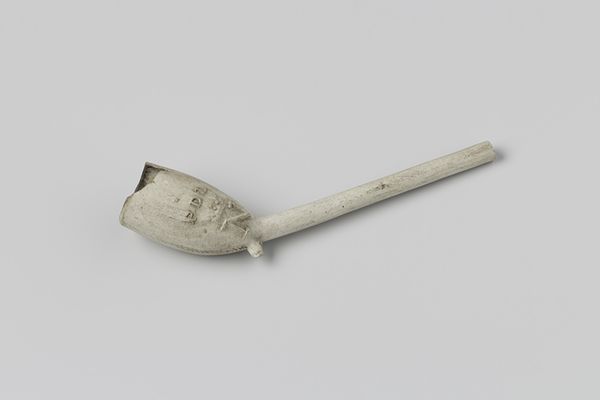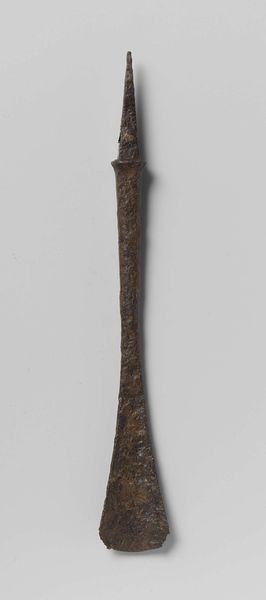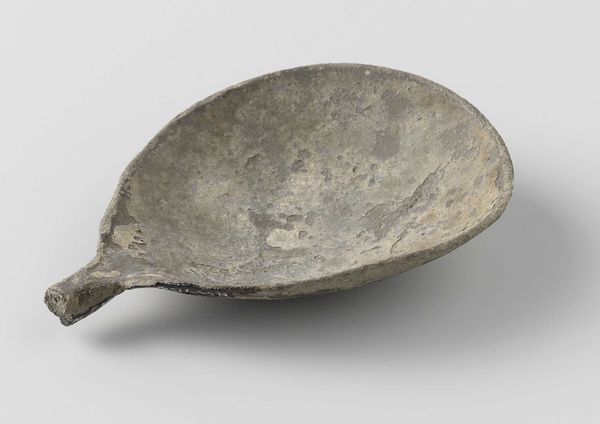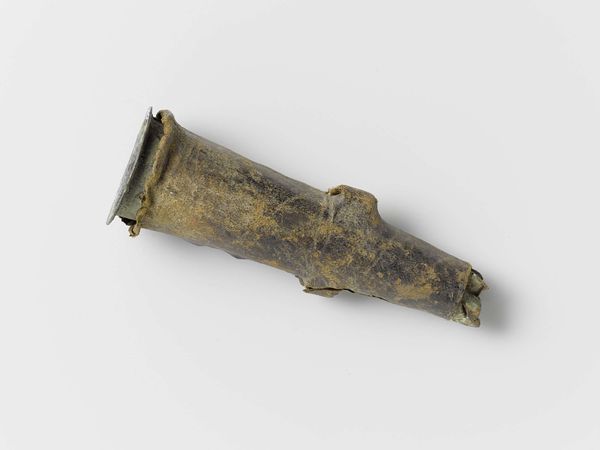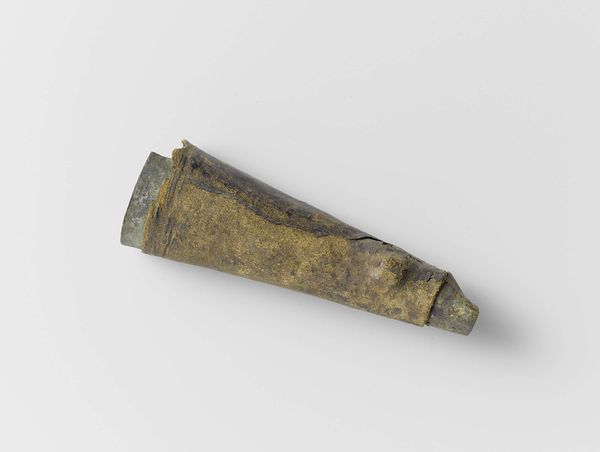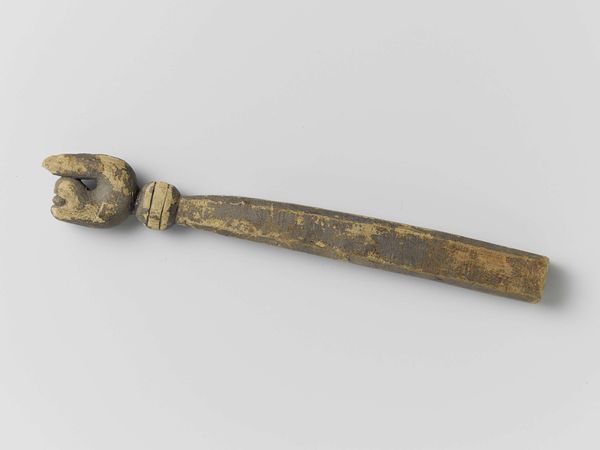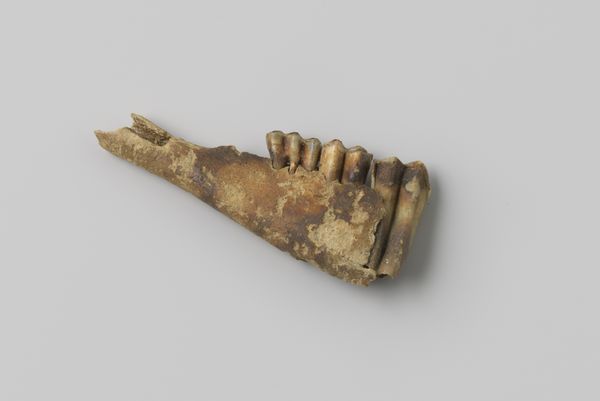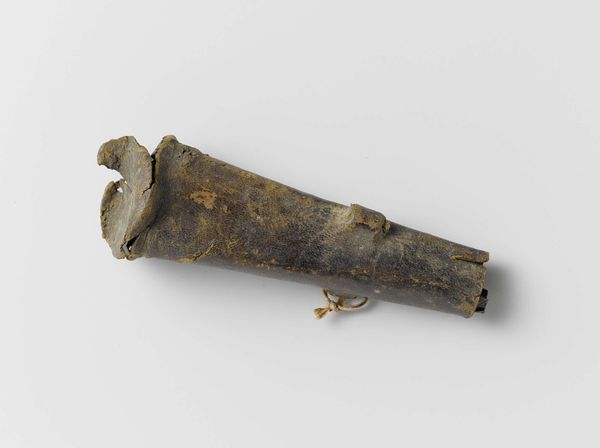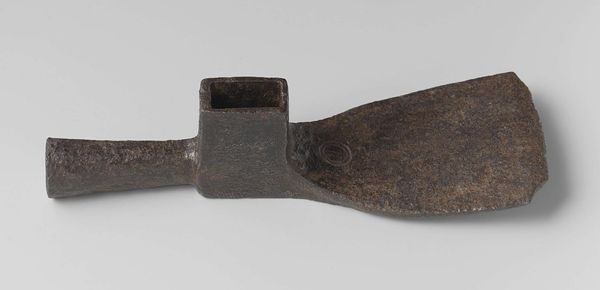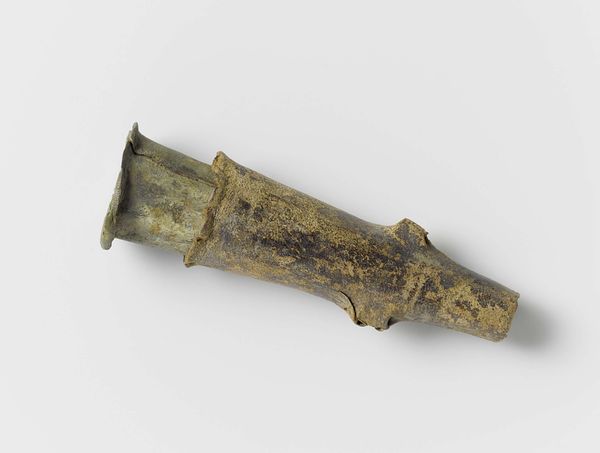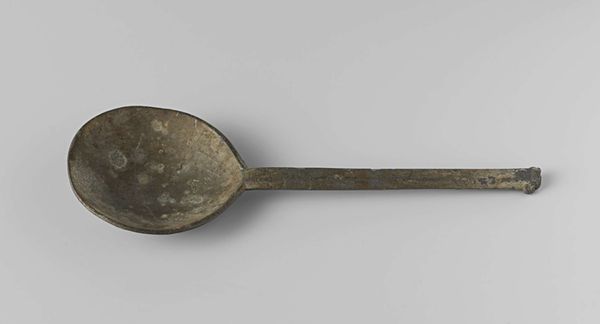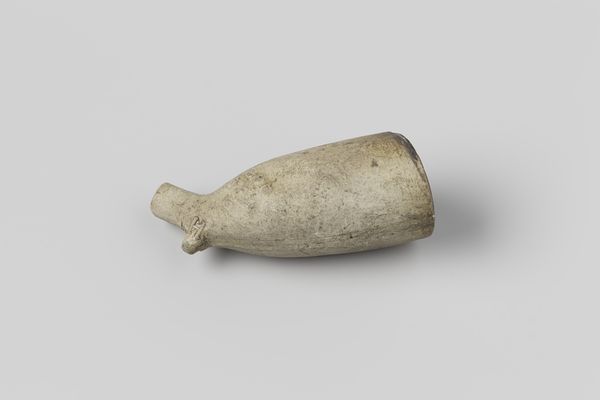
sculpture, wood
#
medieval
#
form
#
sculpture
#
wood
Dimensions: height 9.7 cm, width 3.4 cm, depth 1.8 cm
Copyright: Rijks Museum: Open Domain
Editor: This is a fragment of a wooden spoon, dating back to around 1590-1596. It’s part of the Rijksmuseum collection and is credited to an anonymous artist. The piece feels incredibly raw and utilitarian, even in its broken state. What stories do you think it holds? Curator: Well, I find myself reflecting on labor, on who made and used this spoon. We're looking at an object from a time of significant social stratification. This spoon, likely a common household item, hints at the daily lives of ordinary people whose experiences are often overshadowed by narratives of wealth and power. Editor: That’s a really interesting point. It does feel quite connected to the earth, especially given that it is wood. Do you think that was intentional or is that more about the materials that were available at the time? Curator: It's a fascinating intersection of both necessity and symbolic meaning. Wood was readily available, yes, but its use also connects to a deeper understanding of humanity’s relationship with nature and where we find our nourishment. Who was using it, were they also involved in creating the nourishment in that form. It is all intricately tied together. This speaks to the politics embedded within simple, everyday objects. Editor: So, by looking at this seemingly simple object, we can consider labor, class, gender and politics. It’s really a powerful concept, considering its fragility! Curator: Exactly! Material culture, especially of everyday objects, allows us to see how these forces shaped individual experiences and broader societal structures. It's a tangible link to the past that prompts questions about inequality and the distribution of resources, questions that are, unfortunately, still relevant today. Editor: I never would have thought a spoon could hold so much meaning. I definitely learned a lot today, especially the importance of viewing artworks within their cultural contexts. Curator: Likewise, considering this fragment has allowed me to pause and really reconsider where value can be found and how things intersect in a world filled with art.
Comments
No comments
Be the first to comment and join the conversation on the ultimate creative platform.
